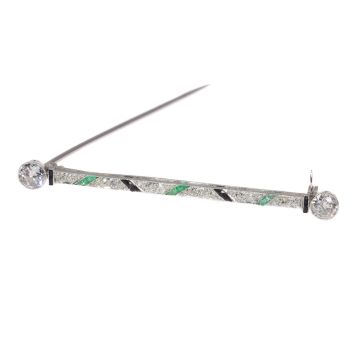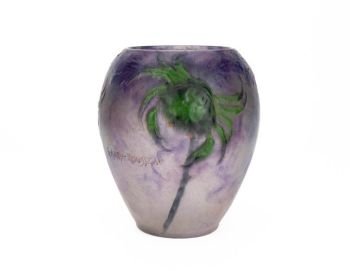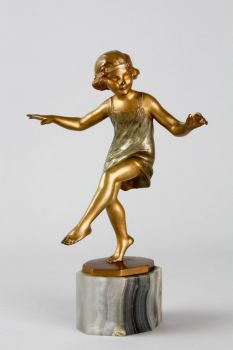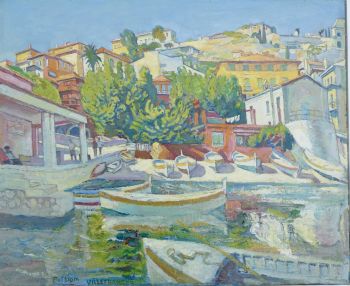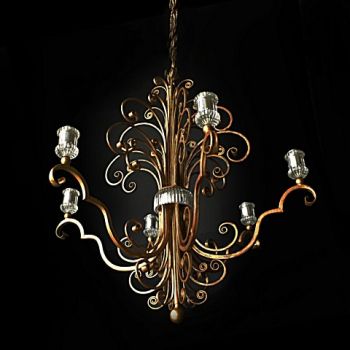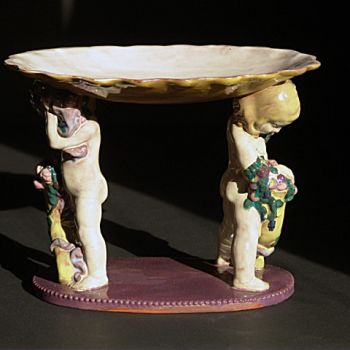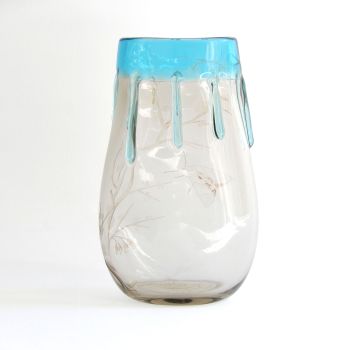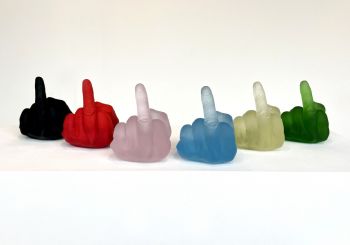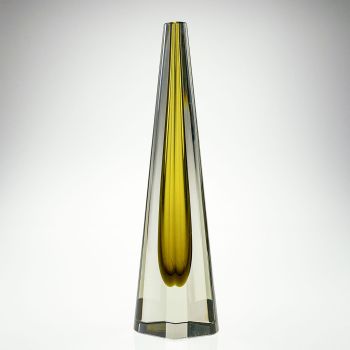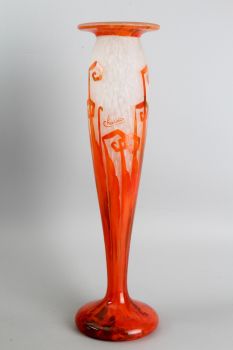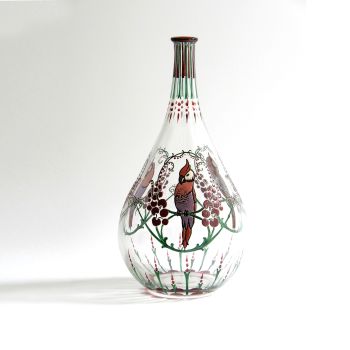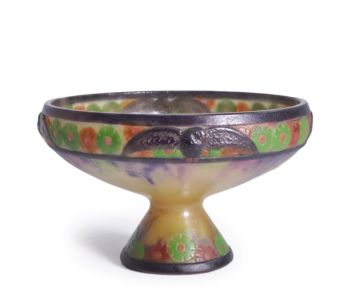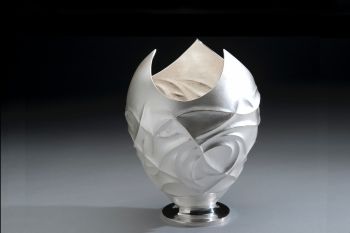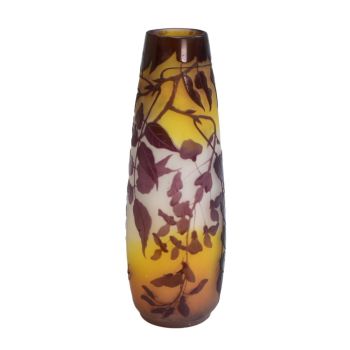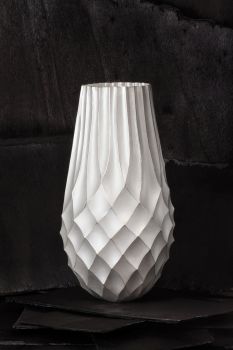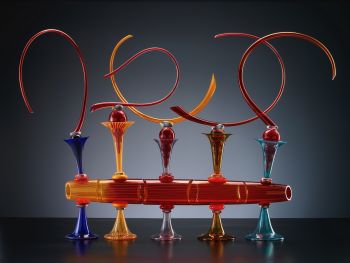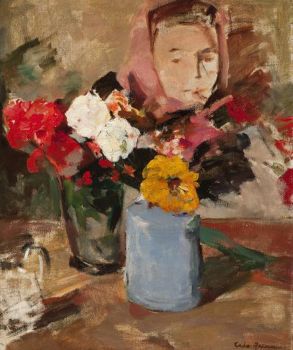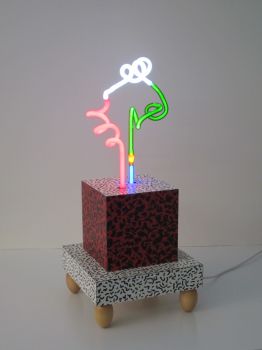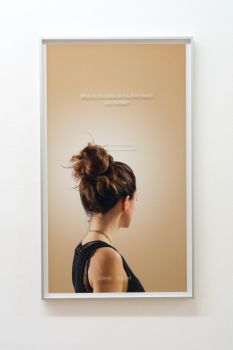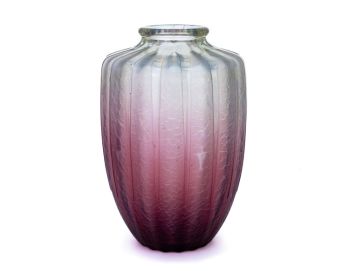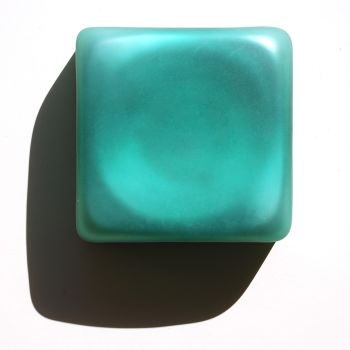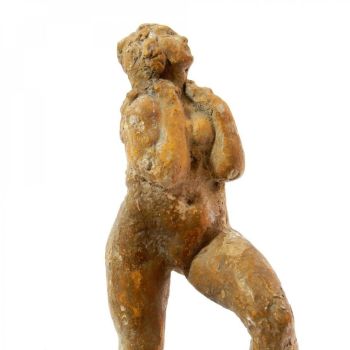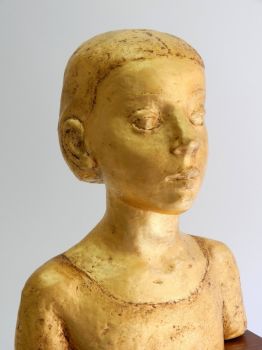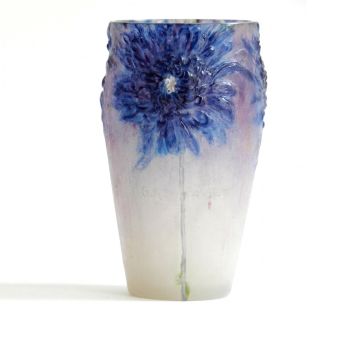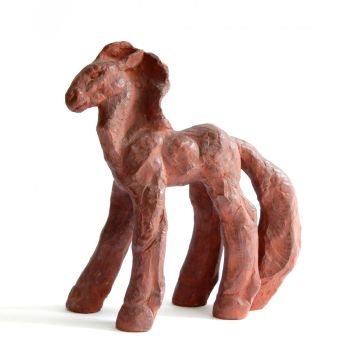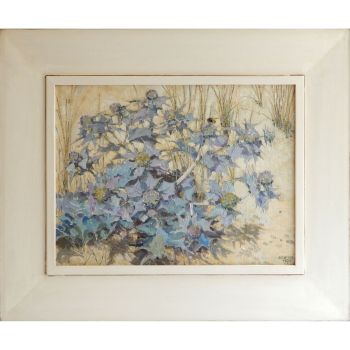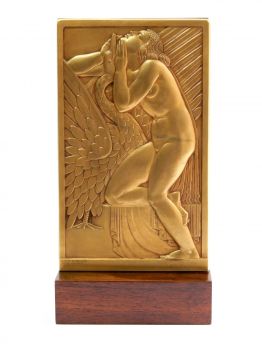Purple flower vase on pressed-glass base 1924 - 1925
Chris Lebeau
Bicchiere
41 cm
ConditionMint
Prezzo su richiesta
Dille Art
- A proposito di opere d'arte
Beautiful and Stylish Vase
This stunning, stylish vase is already a masterpiece in its elegant simplicity but becomes even more remarkable with its stepped pressed-glass base in the same warm, deep purple color.
Chris Lebeau was a great and versatile artist, as demonstrated by this monumental vase designed in 1924/25 for the Leerdam Glass Factory. During that time, Lebeau created a series of flower vases, typically placed on dark purple pressed-glass pedestals. The beautifully shaped vases were inspired by various plant species as well as the flowers they were intended to hold. Chris Lebeau consistently refused to design anything that could be used to serve alcohol, as he was a committed teetotaler.
The underside of the vase is signed with Chris Lebeau’s etched monogram.
Biography:
Joris Johannes Christiaan (Chris) Lebeau (May 26, 1878, Amsterdam – April 2, 1945, Dachau) was an exceptionally versatile and prolific artist, resistance fighter, and anarchist.
Chris Lebeau grew up in a large, impoverished family as the son of a staunch socialist. From 1892 to 1899, he attended the Quellinus Drawing School and the National School of Applied Arts. He later studied drawing in the evening program at the Rijksakademie van Beeldende Kunsten in Amsterdam from 1901 to 1903. Additionally, he took drawing lessons at the Vâhana school under De Bazel and Lauweriks, whose influence profoundly shaped his approach to art. As an artist, Lebeau remained devoted to Jugendstil or Art Nouveau, initially in applied arts and later across a wide variety of artistic disciplines. His curiosity drove him to master new techniques, such as glass art. His remarkable oil portraits from the 1930s, however, are purely realistic in style.
Lebeau was a true polymath. He introduced Europe to the previously unknown technique of batik by showcasing his batik work at the Paris Exposition in 1900.
In addition, he designed wallpaper patterns, worked with linen, created graphic works such as lithographs and etchings, produced calendars, designed posters and ex-libris, and painted landscapes, still lifes, and portraits.
He also designed and crafted glass. This vase was created for Leerdam, where Lebeau collaborated extensively with the much younger Copier. Together, they began making "Unica" pieces. However, after a disagreement, Lebeau moved to Bohemia, where he worked with Moser to create "Unica" pieces for a few months at a time. These unique works were exceptional. After a while, he moved on to other pursuits, but his contribution to glass art remains significant, and he is regarded as one of the greats of his era.
In addition to glassblowing and design, he also worked with stained glass, created sculptures, and explored numerous other art forms. His versatility and productivity were remarkable.
When the Nazis came to power, Lebeau entered a sham marriage with a German Jewish woman in 1935. He married multiple times, often in open arrangements. An anarchist, vegetarian, and teetotaler, Lebeau joined the resistance with his wife and a former student and fellow artist, Sixta Heddema. Together, they forged documents and provided aid to Jewish Dutch citizens. On November 3, 1943, Chris Lebeau, his wife, and Heddema were arrested. Lebeau took full responsibility, ensuring that his wife and Heddema were released. He refused to abandon his resistance activities.
After being transferred to Kamp Vught, Lebeau arrived at Dachau in May 1944. He ultimately died of exhaustion on April 2, 1945.
Literature:
- A. v.d. Kley-Blekxtoon; "Leerdam Glas 1878-2003", 4th edition, page 80, illustration 86.
- Collection Meentwijck – 'Leven in een collectie' Toegepaste kunst 1890-1940 ("Living in a Collection: Applied Arts 1890-1940,") Museum Singer / Publisher Waanders, Zwolle, 2000, pp. 203-213.
- "Wat is Art Nouveau & Art Deco Waard," Volumes I & II, uitgegeven door Rob Zeegers, Janny Stuurman-Aalbers, en Reinold Stuurman, Uitgeverij Scriptum Art, Schiedam, NL, en Snoeck-Ducaju & Zoon, Gent, België, 2001. Volume II, pp. 42-43, illustration p. 42.
Condition:
The vase is in excellent condition, with some minor production imperfections such as a small air bubble in the vase and slight mould seams on the base.
Material:
Glass
Measurements:
Vase:
Height: 35 cm (13,78")
Neck diameter: 3 cm (1,18")
Base diameter: 14,9 cm (5,87")
Base:
Height: 7 cm (2,76")
In total: :
Height: 41 cm (16,14")
Period:
1924/25 - A proposito di opere artista
Chris Lebeau (1878–1945) è stato un artista, designer e figura chiave olandese molto influente nei movimenti Art Nouveau e Art Déco. Nato ad Amsterdam, Lebeau si distinse per i suoi diversi talenti artistici e la sua incrollabile dedizione all'unione di bellezza, utilità e artigianalità nella vita di tutti i giorni. Condivideva una parentela filosofica con gli ideali di William Morris, mirando a elevare il design e l'artigianalità per contrastare la crescente industrializzazione e il declino percepito della qualità artistica.
L'opera artistica di Lebeau era notevolmente versatile e comprendeva grafica, tessuti, ceramiche, vetreria e rilegatura di libri. Il suo lavoro è celebrato per i suoi motivi intricati, le forme organiche e una meticolosa attenzione ai dettagli. Che si trattasse di creare vetrate, disegni per carta da parati o illustrazioni di libri, combinava tecniche tradizionali con un'arte innovativa, assicurandosi che ogni pezzo fosse sia funzionale che esteticamente accattivante.
Lebeau era profondamente impegnato nel principio secondo cui l'arte dovrebbe essere accessibile e integrata nella vita quotidiana. Credeva nella democratizzazione della bellezza, impegnandosi a portare un design di alta qualità al grande pubblico. Questo ethos non solo ha informato il suo lavoro, ma ha anche ispirato una generazione di artigiani e designer che hanno seguito le sue orme.
Oltre ai suoi sforzi artistici, Lebeau era un convinto sostenitore della giustizia sociale e dell'uguaglianza. I suoi ideali politici spesso si intersecavano con il suo lavoro creativo, poiché cercava di usare l'arte come mezzo per un cambiamento sociale positivo. Questo impegno sia per l'arte che per l'attivismo lo ha distinto come un visionario nel panorama culturale olandese.
Tragicamente, la vita di Lebeau fu interrotta durante la seconda guerra mondiale. Come oppositore del fascismo e difensore dei diritti umani, fu arrestato dal regime nazista e alla fine morì nel campo di concentramento di Dachau nel 1945. Nonostante la sua prematura scomparsa, la sua eredità permane nei musei, negli archivi e nell'influenza duratura dei suoi progetti, che continuano a essere celebrati come capolavori dell'Art Nouveau e dell'Art Déco olandesi. Lebeau continua a essere una testimonianza del potere trasformativo dell'arte e dell'importanza duratura della creatività e dell'integrità nel design.
Sei interessato ad acquistare questa opera d'arte?
Artwork details
Related artworks
Gabriel Argy-Rousseau
Gabriël Argy-Rousseau – Crabes et Algues vase – 19201920 - 1929
Prijs op aanvraagAntiques Emporium
1 - 4 / 24Johann Loetz (Lötz) Witwe Klostermühle
Johann Loetz Witwe - Phänomen Genre 7773 – Orange1900 - 1910
Prijs op aanvraagAntiques Emporium
1 - 4 / 24Johann Loetz (Lötz) Witwe Klostermühle
Johann Loetz Witwe – Jugendstil Cobalt Papillon vaas1900 - 1910
Prijs op aanvraagAntiques Emporium
Johann Loetz (Lötz) Witwe Klostermühle
Johann Loetz Witwe - Phänomen Genre 7773 – Orange1900 - 1910
Prijs op aanvraagAntiques Emporium
Jan Voerman sr
Stilleven met bloemen in een Chinees beeldje1850 - 1900
Prijs op aanvraagKunsthandel Pygmalion
1 - 4 / 24Frères Daum
Daum Nancy – “Paysage Soleil Couchant” vase with two applied handles1900 - 1910
Prijs op aanvraagAntiques Emporium
1 - 4 / 24- 1 - 4 / 12







